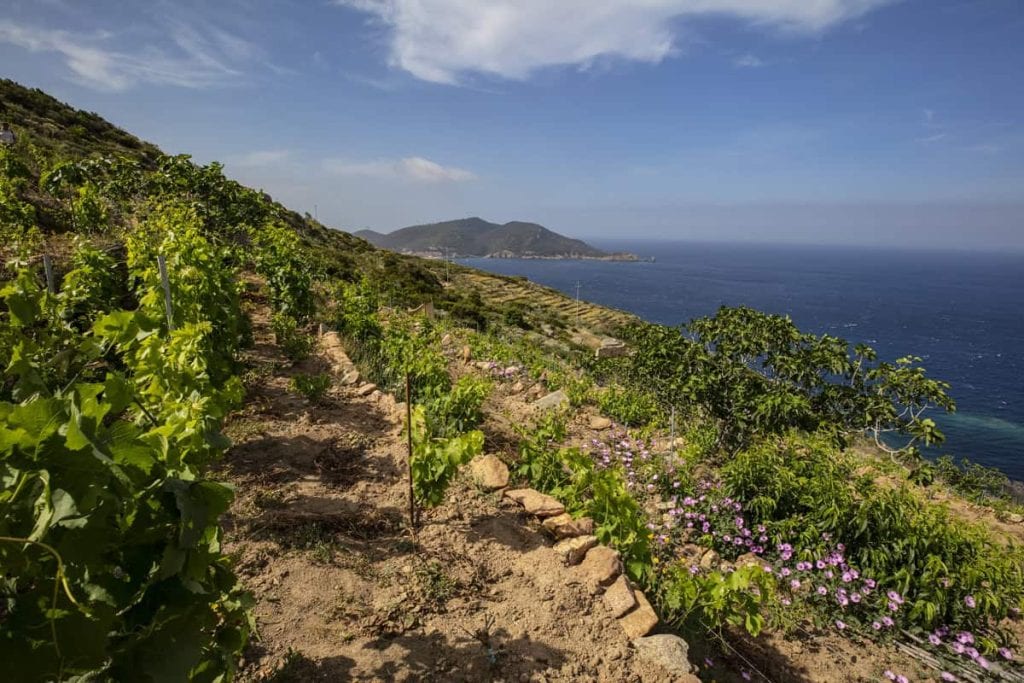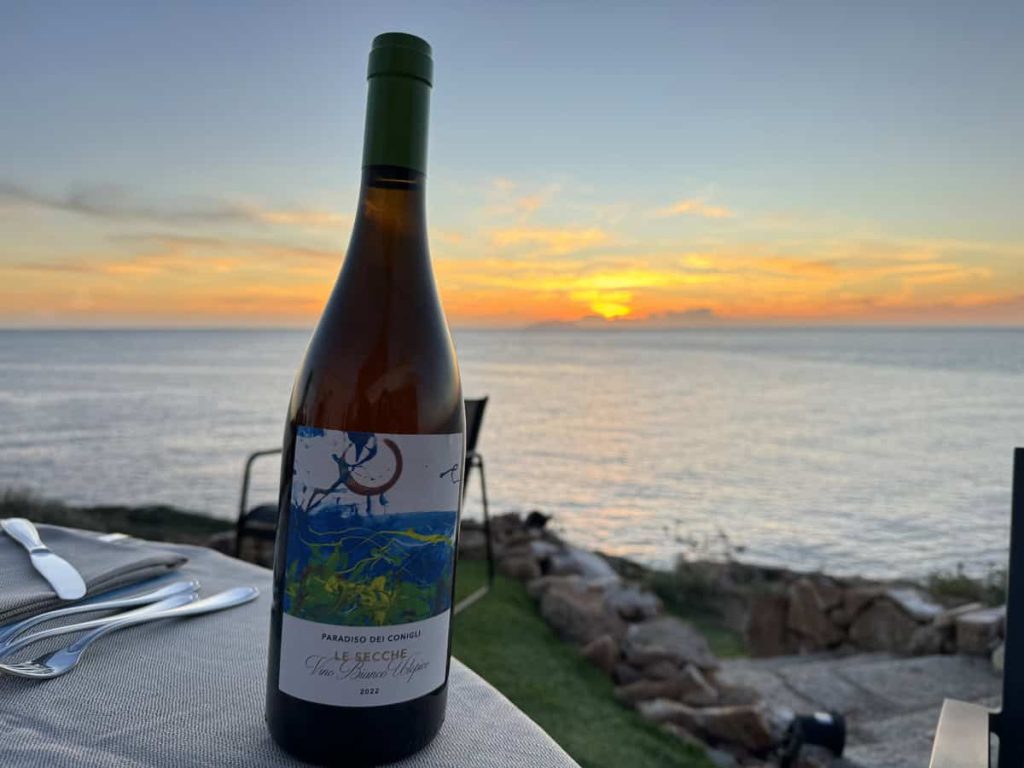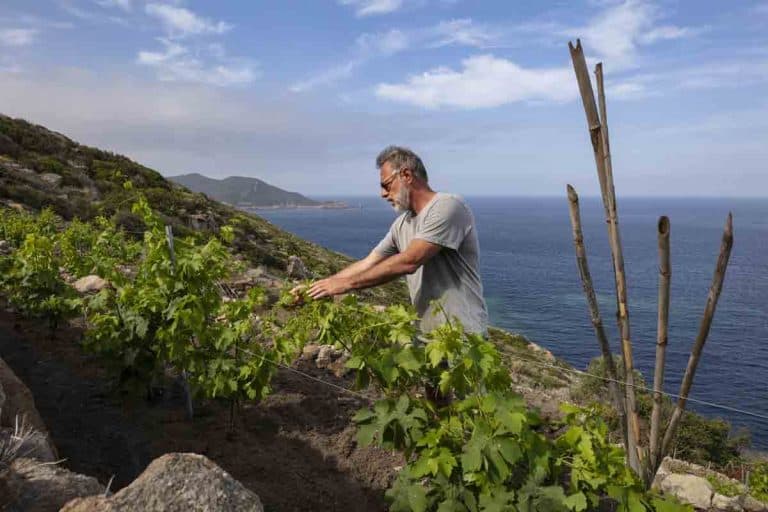Ansonica is a different kind of wine. You either love it or hate it. "When I started," explains Massimo Piccin, producer at the Paradiso dei Conigli estate on Giglio Island, a Venetian engineer who moved to Tuscany to fulfil his dream, "I was more convinced by the island's beauty and ruggedness than by the wine's pleasantness." Ansonaca, as it’s called on Giglio, is a headstrong wine, certainly not a crowd-pleaser, and you need to connect with it to truly appreciate its character. It shares the same resilience as the island's inhabitants, who are used to being self-reliant and self-sufficient. Soon it will celebrate its tenth harvest. For Piccin, it was a sentimental project: "Today it might be seen as a trend," the producer explains, "considering all the attention around natural wine. But what I did, I now realise, was almost a miracle. I believed in this grape variety with determination—it wasn't easy, especially considering the costs and effort it demanded over time. But its evolution, its ability to surprise me, and its resilience even in the worst vintages kept me going. Giglio is like a mission, with deep emotional value. You don't make this wine with a calculated economic return in mind, that's for sure."

From Bolgheri to the Island of Giglio
It’s all challenging but at the same time exhilarating. The heroic nature of this viticulture is tangible, with steep slopes, unique locations, micro-plots, and hand-harvesting where grapes are transported on foot along rugged, undulating paths, adding to the uniqueness of both the wine and the people dedicated to it.
On Giglio, Massimo Piccin has nurtured an alter ego, a different side of himself, far from the limelight and prestige his first winery, Podere Sapaio in Bolgheri, has achieved over time. His island venture is more virtuous, focused on research and experimentation—a producer's journey that had been missing from his imagination. Challenging nature and himself to fully understand the potential of such a tough but brilliant grape, difficult to grow yet capable of expressing harmony and richness, as seen in the 2022 vintage of Le Secche, the latest release.

Le Secche '22: a utopian wine
An unmistakable varietal, the 2022 Le Secche vintage offers aromas of dried apricot and yellow peach, fragrant spices, and lavender. Overall, it's an aromatically bold wine, with notes of heather, arbutus, and cyclamen. On the palate, it’s dry and firm, like a coastal wine should be, with good progression and rhythm, mineral and savoury. Le Secche, a “utopian” wine, takes its name from the area where it is produced, near the Fenaio Lighthouse. The vineyard stretches over 6,000 square metres of cliffside terrain, with vines over 60 years old, accessible only on foot, trained in bush vine and espalier on terraces. Here in 2015, Piccin set out to create a wine that would reflect as closely as possible the expression of the Ansonica grape and the terroir of the island. Today, this orange wine, made from white grapes—mostly Ansonica (with Biancone, Malvasia, and Procanico)—is produced in a limited run of just 700 bottles. It’s labelled as a “utopian” wine because it comes from an ambitious, exclusive, and demanding project that relies solely on manual and natural cultivation, as natural as the vinification process itself. Part of the wine is vinified with whole bunches (including the stems) in stainless steel, with maceration for several days. After racking, the wine is vinified as a white. Maturation takes place in ceramic Clivers for about a year, followed by 12 months of bottle ageing.


 Meloni: "Tariffs? If necessary, there will be consequences. Heavy impact on agri-food sector"
Meloni: "Tariffs? If necessary, there will be consequences. Heavy impact on agri-food sector" The Government honours the greats of Italian cuisine, from Bottura to Pepe. Massari: "Thank you, Meloni, the only one who listened to us"
The Government honours the greats of Italian cuisine, from Bottura to Pepe. Massari: "Thank you, Meloni, the only one who listened to us" "We must promote a cuisine that is not just for the few." Interview with Massimo Bottura
"We must promote a cuisine that is not just for the few." Interview with Massimo Bottura Wine was a drink of the people as early as the Early Bronze Age. A study disproves the ancient elitism of Bacchus’ nectar
Wine was a drink of the people as early as the Early Bronze Age. A study disproves the ancient elitism of Bacchus’ nectar "From 2nd April, US tariffs between 10% and 25% on wine as well." The announcement from the Wine Trade Alliance
"From 2nd April, US tariffs between 10% and 25% on wine as well." The announcement from the Wine Trade Alliance






